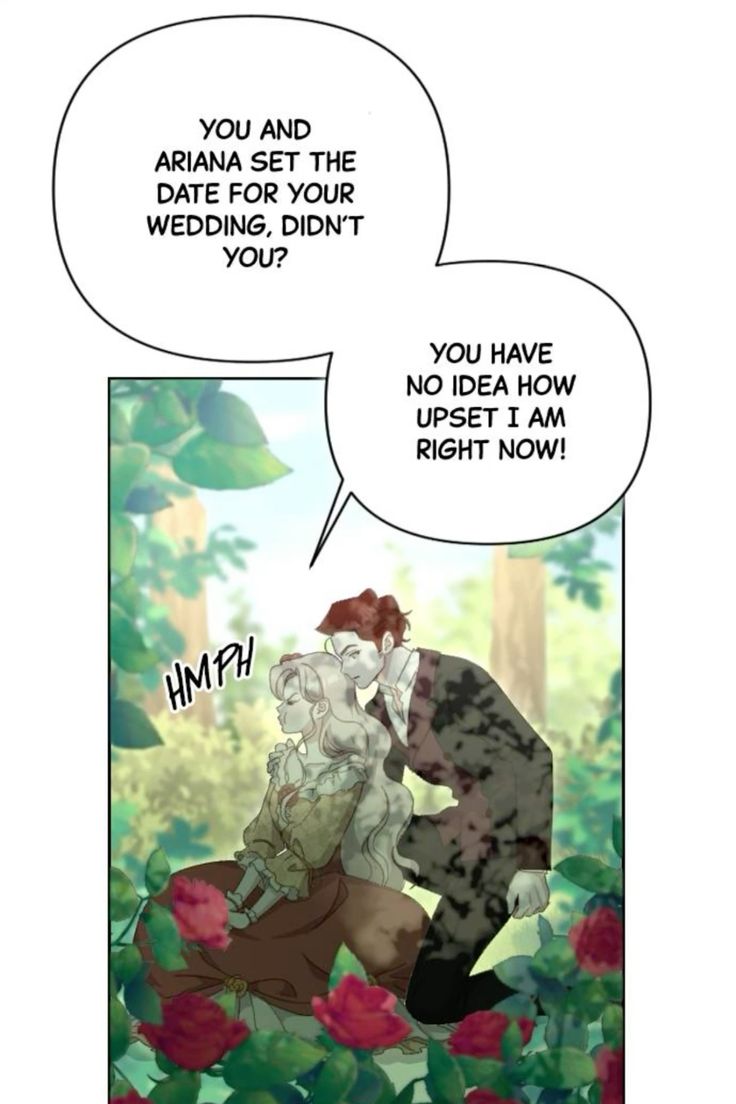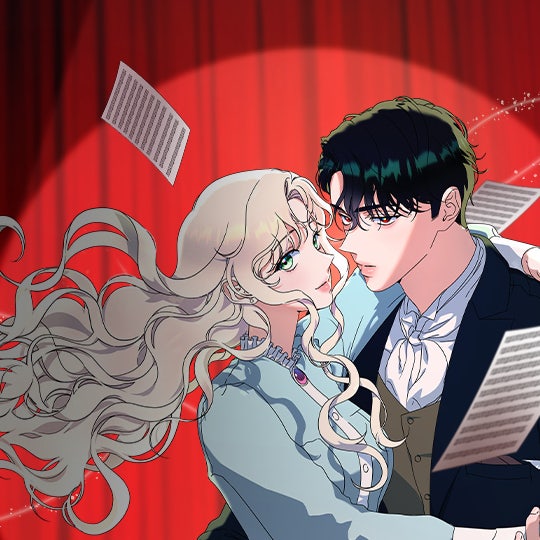
To Whom It No Longer Concerns is a sumptuous revenge drama from studio LICO and creator fairydragon that entwines time‑reset mechanics with courtly intrigue and a slow‑burn, morally tangled romance. After Ariana Lopez is betrayed, exploited, and murdered, she wakes transported back to the past with every memory intact and a single, burning purpose: to reclaim what was stolen and punish those who cast her aside. She forges a fraught pact with Duke Dante Heigenberg, the empire’s most feared and desired noble, whose blend of ruthless competence and unexpected tenderness turns their alliance into a dangerous, intimate choreography. As Ariana weaponizes foreknowledge, the series asks whether justice can be cleanly served when love, power, and vengeance begin to overlap; watch a teaser here:
Premise and narrative engine
• Death as ignition: The story detonates with a visceral rewind; Ariana’s murder becomes the spark for a deadline‑charged second chance. Foreknowledge sharpens every choice, so ordinary moments pulse with dramatic irony and impending retribution, turning memory into a tactical weapon rather than mere grief.
• Revenge as chess: The plot runs on calculated maneuvers; Ariana repurposes private knowledge into public theater, engineering alliances, planting seeds of doubt, and staging exposures that reveal greed and hypocrisy. Her strategies feel surgical; less melodramatic rage than cold, effective unmasking.
• Love entangled with strategy: Romance is not an escape but an axis of risk. Ariana and Dante’s bond begins as a pragmatic alliance and gradually accrues dependency, desire, and moral ambiguity. Intimacy complicates strategy, forcing choices where justice, vengeance, and genuine care collide and no outcome is morally unambiguous.
Main characters
• Ariana Lopez: Once silenced by exploitation and betrayal, Ariana is reborn with full memory, resolve, and a sharpened moral imagination. Her arc moves from wounded survivor to deliberate architect of her own fate; she blends emotional intelligence, musical artistry, and cold tactical thinking to reclaim what was stolen. The result is a heroine who is both vulnerable and formidable; someone who composes revenge with the same care she once applied to her music.

• Duke Dante Heigenberg: A magnetic powerhouse of the empire, Dante reads as equal parts menace and magnetism. Feared for his influence and admired for his presence, he arrives as Ariana’s protector and strategic partner, but his motives are shaded; devotion, self‑interest, and fascination with Ariana’s talent all pull in different directions. His growing attachment complicates the campaign for justice and raises the possibility that power can both protect and possess.

• Family and court antagonists: A web of betraying siblings, opportunistic nobles, and a treacherous spouse supply the story’s antagonistic architecture. These figures aren’t mere obstacles; they’re mirrors and catalysts whose hypocrisy and ambition expose the empire’s rot. As Ariana systematically dismantles their networks, each downfall deepens the moral stakes and forces readers to weigh righteous retribution against escalating collateral harm.
• Supporting players and social machinery: Courtiers, servants, allies, and rivals populate the margins and often carry the plot’s emotional truth; small mercies, whispered confidences, and unexpected loyalties. Their choices reveal how power ripples outward, showing that revenge reshapes not only targets but the communities around them.
Themes
• Justice and revenge: The series reframes retribution as an ethical problem rather than a simple payoff. Ariana’s ability to rewrite outcomes forces the story to ask whether vengeance restores balance, perpetuates harm, or becomes a new kind of tyranny. Each exposed villain and calibrated humiliation raises the question of proportionality and whether accountability can be met without losing sight of the person who was hurt.
• Agency after trauma: Resurrection is treated as hard work, not miracle healing. Ariana’s second chance foregrounds reclaiming narrative control, bodily sovereignty, and emotional boundaries in a world that once treated her as expendable. Her recovery is tactical and psychological; relearning trust, setting terms, and converting past violations into strategic knowledge.
• Power, intimacy, and moral compromise: Pragmatic alliances blur into charged attachments, and the comic mines that slippage for moral drama. The calculus of safety versus autonomy becomes intimate, closeness bought for protection creates entanglements where tactical gains come with emotional cost, and every pragmatic choice forces characters to recalibrate what they will sacrifice for security.
• Art as identity and instrument: Ariana’s music functions as both inner life and outward leverage; performance is a form of speech, reputation, and influence. The series resists the trope of art as mere ornament by showing how creativity supplies moral language, social capital, and tactical advantage, making artistry central to both her personhood and her plan.
• Consequences and the ethics of repair: Beyond single acts of revenge, the narrative tracks the aftermath; who must live with the fallout, how communities are transformed, and whether repair is possible once retribution reshapes social bonds. The series presses readers to consider restorative paths alongside punitive ones.
• Identity under scrutiny: Court intrigue exposes how labels; victim, villain, noble, performer; are mobilized as tools. The story interrogates how identity is policed, performed, and reclaimed, showing characters who are both constrained by and capable of rewriting the roles assigned to them.

Visual style and tone
• Cinematic, ornate composition: The art favors sweeping period‑room spreads and meticulously rendered set pieces that make the court feel expansive and lived‑in; closeups and facial acting are used deliberately to turn glances and small gestures into narrative pivots.
• Costume and prop storytelling: Wardrobe and object details function as shorthand for rank, intent, and moral state: embroidery, silhouette, and accessory choices telegraph alliances, power plays, and personal transformation.
• Gothic melodrama tempered by interior quiet: Scenes alternate between palace spectacle; ballrooms, confrontations, and public unmaskings; and intimate musical moments where Ariana’s performance opens the reader into her interior life. The result is a tone that’s lush and baroque without losing emotional subtlety.
• Measured escalation and cathartic payoffs: Visual pacing privileges methodical scheming and slow‑burn escalation; careful setup sequences build toward cinematic reveals and personal reckonings, so each explosive moment lands with earned weight and consequence.

Creator notes and community
• Entertainment married to emotional depth: Studio LICO and fairydragon frame the series as more than spectacle, it’s engineered to deliver dramatic twists while honoring the emotional consequences that follow. Updates emphasize character evolution as much as plot beats, inviting readers to invest not just in what happens but in how each betrayal, triumph, and compromise reshapes the people at the story’s center.
• Multiplatform teasing that deepens curiosity: Regular creator touchpoints; teasers, process art, annotated panels, and Q&A threads; turn release cadence into part of the experience. Concept sketches and behind‑the‑scenes notes illuminate craft choices; episode hints and incremental reveals reward close reading and fan theorizing, cultivating a feedback loop where audience speculation and creator signals amplify anticipation and emotional investment.

Why read it
Read To Whom It No Longer Concerns for a propulsive revenge fantasy that pairs surgical plotting with aching, slow‑burn romance. The series rewards readers who love tightly engineered comeuppance, plans that feel clever rather than convenient, and a heroine who converts trauma into strategy without losing her emotional center.
If you’re drawn to morally grey alliances, court intrigue, and the moral puzzles that come with power, this comic delivers constant tension; every victory reframes responsibility, and every rapprochement risks complicity. Fans of time‑reset premises, ornate period drama, and emotionally charged romances will find the blend of spectacle, strategy, and intimate musical moments both satisfying and thought‑provoking.
Score: 9 out 10